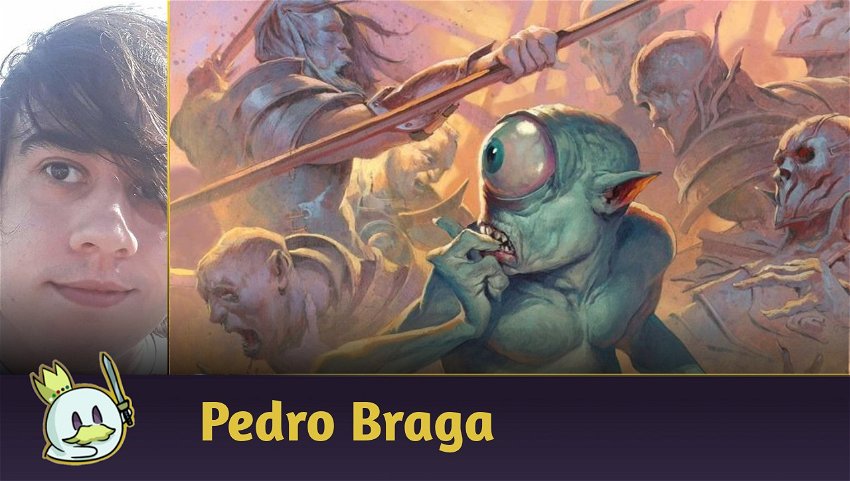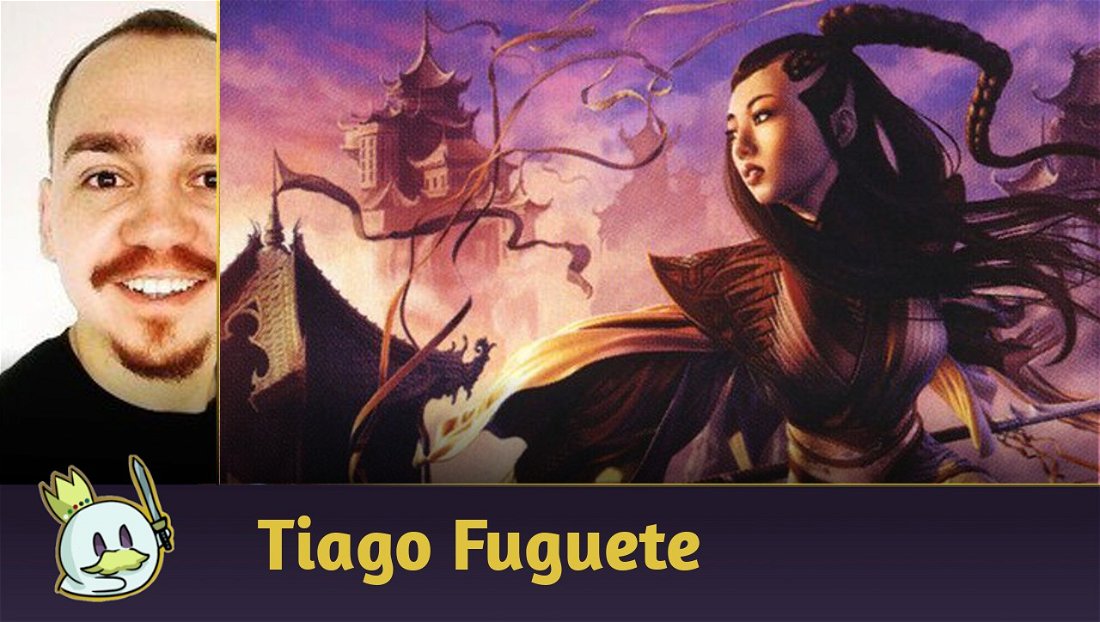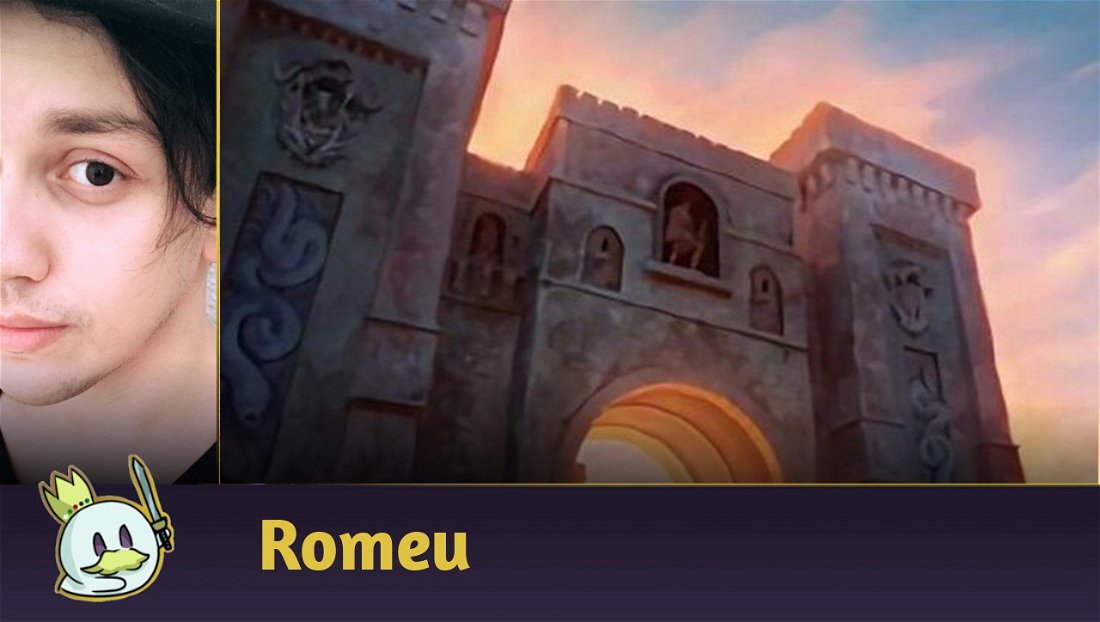In my many years of Magic: The Gathering, few things have been more exciting than playing Commander, all thanks to a happy atmosphere, the presence of great friends and the promise of creating the most fun situations in the game.
Like a thirty-year relationship between two old people, the Commander sometimes falls into the same and, while the idea of playing a game with my Kalamax, the Stormsire is interesting, in EDH it is possible to spice things up in other ways.
In today's article, we're going to rank some of the most interesting, unconventional, and bizarre commanders we can bring to our kitchen tables and game stores to shake things up.
Rograkh, Son of Rohgahh

We've already started at tenth place on the list with a little guy who's a little confusing to understand. Costing zero and with plenty of relevant keywords, including Trample — all for a minimal cost. It would look like a dream, if the creature didn't have zero power.
Fortunately, this little guy is not difficult to deal with. Its keyword combination is extremely immoral, having a strong core with First Strike and Menace, with a Trample bonus. A single Granite Grip is all it takes to elevate its power to new heights, capable of dealing massive damage and winning the game.
Another thing that doesn't make Rograkh, Son of Rohgahh's deck a mystery is his partner ability, which allows him to team up with another commander, usually Ardenn, Intrepid Archaeologist capable of attaching many auras and equipment to your Rograkh.
Still, the weirdness of how this card is composed is enough to give it his spot in the top 10.
Grolnok, the Omnivore

Grolnok, the Omnivore can create one of the tricks I'm most enjoying imagining while making this list: a frog tribe, creatures that when they attack trigger Grolnok's ability to mill, which works just as well with instants and Flashback spells that will stay in the graveyard, and with permanents, which will be exiled with croak counters, just like a good fluffy frog does. While this cute, sticky little guy is on the battlefield, cards with that kind of counter can be played or cast.
When done right, decks like Grolnok, the Omnivore can turn your graveyard and exile into super-safe extensions of your hand, allowing you to keep numerous good cards for the best times in hard-to-reach places, creating a welcome and competitive card advantage.

Despite a few really good frogs, it's possible to turn other creatures you control into frogs with spells like Polymorphist's Jest and Arcane Adaptation, so even some of your creatures outside the tribe can generate value. After all, sometimes even an Aesi, Tyrant of Gyre Strait can be a frog with very short legs instead of a snake.
Cromat

Five-color commanders are often popular, especially in some cEDH tactics, as they make it possible to make Good Stuff decks focused on using the best cards of each color, combo or strategy, to just win fast — as is the case with Kenrith, the Returned King or Jodah, Archmage Eternal. However, with Cromat we have new options for building five-color decks, since this creature's abilities are fully focused on it, unlike Kenrith's.
A very creative way to build your deck based on this Illusion is to make it a Voltron, a strategy focused on filling a powerful creature with buffs, but with the difference that this oppressive power is achieved not by equipment or enchantments, but through mutations.

Mutation is a mechanic from the Ikoria: Land of Behemoths set, focused on “creating your own monster”, by overlapping creatures, transforming them into one big kaiju. It especially benefits from Cromat's ability that returns it to the top of the deck, since when mutated all cards are considered one, making you not lose value, leaving your resources safe with the ability to return everyone to your deck in front of a removal
With access to five colors it is easy to choose the best from the list of creatures with this ability, such as Nethroi, Apex of Death and make your Cromat invincible.
Grenzo, Dungeon Warden

Grenzo, Dungeon Warden it's here because it works with an element a bit more unpredictable than the top of the deck: its bottom; just like your favorite online slot games. Obviously, he has a simple way of being able to predict the last card of your deck, which is through a lot of Scry, which slightly trivializes the difficulty curve of building such a deck efficiently.

Even so, we can count on different methods of placing creatures at the bottom of the deck, most notably The Cauldron of Eternity, a powerful artifact that deals with exactly this mechanic. On the other hand, Fire Prophecy is a removal that works on this theme.
From there, just look for ways to make your Grenzo huge, generating a lot of mana. Priest of Urabrask and Priest of Gix are great for this, for example. Still, playing with no knowledge of the bottom of your deck and always aiming to make your commander as big as possible to try to get what's in the bottom is wonderful and fun.
Aeve, Progenitor Ooze

This is a Commander with Storm, and that's wonderful. That simple. Not only is it an ability that until now had not been seen on a creature, it also came directly to a commander.
Aeve, Progenitor Ooze can indeed be used in an ooze tribal, but there are several ways to create combos and situations where your storm count is high and capable of generating several massive slimes, thanks to Storm. Like the combo that I'll give you below for you to start your Aeve deck:

Temur Sabertooth will return your Eternal Witness to your hand, which will continually recycle your Early Harvest, generating as much mana as you want, which you can repeat this combo, will trigger abilities of permanents as many times as you want and will increase your storm count to very high numbers, creating thousands of Aeve, Progenitor Ooze tokens and making them all gigantic.
Looking for other strategies, such as various zero-cost equipment like Lotus Petal, to increase the storm counter, is also valid and brings the fun of Commander to the game. As much as there is a more efficient way to do it, Commander is freedom.
Obeka, Brute Chronologist

Obeka, Brute Chronologist isn't a rare commander to see, so it's not at the top of that ranking, but it still has an intrinsic weirdness to it. Its ability is to “jump in time”, that is, Obeka messes with one of the most complicated footnotes in Magic: ending the active player's turn on the spot, including clearing the spells and effects present in the stack.
Ending the turn abruptly creates some unexpected situations. Since the steps of the turn are not raced, they are jumped straight to the cleanup step, right after the End Step, a trigger that happens at the end of the combat, as in the case of Delina, Wild Mage that creates tokens that exile in that part of the turn, no longer occurs.
The same goes for the Myriad, which creates Tokens that are exiled at the end of the combat phase. If you have a Wizards of Thay, activate Myriad and after the damage ends the turn, you will keep them forever as long as you don't let the combat turn end. In fact, the Tokens themselves also have Myriad, which will make your board increase exponentially with the new triggers every turn.

Unfortunately, the Cleanup Step is the end of the turn, which prevents us from abusing effects like Massacre Wurm, which lasts until the end of the turn and wears off when Obeka is used. In order for the effect to be maintained, it would be necessary for it to end explicitly in the End Step, just like Final Fortune, which despite talking about the “end of the turn” had an errata in its text adapting it to the “End Step”, allowing you to use the card along with Obeka, Brute Chronologist to gain extra turns before losing the game.
Grist, the Hunger Tide

Usually when a Planeswalker can be your commander, it has the text "Robson the Laser Mage can be your commander." as one of its abilities explicitly. Grist, the Hunger Tide is not an ultra-powerful laser mage, but can still be your commander, even without this ability.
The cool part about its main ability is that, in any zone other than the battlefield, it's not a Planeswalker but a 1/1 Insect-type Legendary Creature, and that's true from the beginning of its deck construction, allowing it to be a commander even without it explicitly written. Are you doubting? You can go check it out, I'll wait for you.
…
Oops, now that you're back, bringing me a piece of cake for being so perceptive, we can continue. Now that our commander is set to Grist, we can do some work. Its colors are very conducive to mill yourself, Dredge and Aristocrats. If you're imaginative, you can also tie this to an insect tribal. After all, a Mortician Beetle goes really well with a sacrifice theme.
Whether with the mechanics of the Witherbloom or Golgari, Grist, the Hunger Tide performs very well and can make a really fun deck. And of course, the best part of all is being able to show your commander and see your friends' confused faces about you using a Planeswalker as a commander without the card explicitly allowing you to do so.
Mishra, Artificer Prodigy

Compared to the latest cards introduced, Mishra, Artificer Prodigy is a more complicated commander to use. Urza's brother is here since his only ability goes against the Commander's logical structure: Whenever an artifact is cast, this card searches for one of the same name in the Deck, hand, or Graveyard and puts it onto the battlefield.
When we talk about EDH, the first question that comes to our mind is “What other card with the same name?”, since it is a singleton format. Cards like Persistent Petitioners exist, but none are artifacts.
The main idea would be: Find a way to put your artifacts on the battlefield and in response to Mishra's trigger that allows you to search for a second card of the same kind in your deck, hand or graveyard, find a way to remove it from the battlefield to one of these zones so that it benefits you and generates an extra value with its return.

A simple example is Blood Funnel which will make your artifacts much cheaper, but they will be countered if you don't sacrifice a creature. The artifact can be cast for a low cost, and if you order the triggers correctly, it will be rescued from the graveyard by Mishra upon activation.
We can also use cards like Possibility Storm and Chaos Warp to throw the newly cast artifact into your deck and then return to the field with your commander's ability, all while these spells take care of it to put a new permanent in play, making you double its value.
Despite the confusion caused by the restriction of the Singleton rule present in EDH and Mishra, Artificer Prodigy, it is possible to build an efficient deck using some Engine parts to extract the best possible from the commander. However, there are some cases where the rule of one card copy per deck can create even more adverse situations…
Circu, Dimir Lobotomist

Circu, Dimir Lobotomist, oddly enough, can be viable in play, even without using its last ability to stop casting cards with the same name as the exiled cards.
The main idea would be to return cards to the top of the opponent's deck with, for example, a Memory Lapse and then use some spell that allows you to exile the top card. The reason for doing this is simple: Make combos unfeasible. Using this, you can shoot very specific targets, even preventing exiled cards from being recast through Arcane Bombardment and other similar mechanics.
The idea of Circu being a commander with minimal possibilities to do well in the format is softened by the Dimir shell in which he finds himself, which arguably is the best color combination in the format today. Combining its main ability not being useful and requiring a very specific build makes this creature so high on this list.
Phage the Untouchable

Phage the Untouchable has the strong ability to make a single combat damage cause the opponent to be defeated, just like a Vorpal Sword, and that's something we want. What makes her up here is precisely her first ability, which escapes the Commander concepts even more than the last two positions. "When Phage the Untouchable comes into play, if you haven't played it from your hand, you lose the game." Making it impossible for our commander to be cast from the command zone.
This ability can be very counter-intuitive, but we have ways around it. Torpor Orb is the main one, along with other tricks like Platinum Angel or Lich's Mastery, to avoid dying to her ability.
We also have ways to place Phage in your hand, like Campfire or Command Beacon. You can also try to negotiate its counterspell before it enters the battlefield with a colleague who is helping you in some political moment of the game, and then find some way to recover it from the graveyard to your hand, or you can counter it yourself with Withering Boon.

But the best way to use Phage the Untouchable is through Endless Whispers, an enchantment capable of putting her from your graveyard onto an opponent's battlefield, causing their defeat. Combined with a Viscera Seer, it is possible to easily win against all opponents in a single turn.
Phage is a commander that will get more and more bizarre and fun whenever we have wacky new additions to Magic. And she deserves the title of the weirdest commander in the game.
Conclusion
Do you have any suggestions for weird commanders? Tell me in the comments!
Thanks and until the next article!














— Kommentare 0
, Reaktionen 1
Sei der erste der kommentiert